Characteristics of Loose Connective Tissue:
- Cells: The main cells found in loose connective tissue are fibroblasts, which are responsible for producing the extracellular matrix components such as collagen and elastin fibers.
- Fibers: The most abundant fibers in loose connective tissue are collagen fibers, which provide strength and flexibility, as well as elastic fibers that allow the tissue to stretch and recoil.
- Ground Substance: This is a gel-like substance that fills the spaces between cells and fibers, providing a medium for the exchange of nutrients and waste products.
- Support: It provides a framework for various organs and tissues, helping to hold them in place.
- Cushioning: It acts as a cushion, protecting delicate organs and structures from damage.
- Flexibility: The elastic fibers in loose connective tissue allow for movement and flexibility in the body.
- Wound Healing: It plays a crucial role in the repair of damaged tissues by providing a scaffold for the migration of cells involved in the healing process.
- Areolar Tissue: This is the most widely distributed connective tissue in the body, and it provides support and flexibility to various organs and tissues.
- Adipose Tissue: This type of loose connective tissue is specialized for fat storage and is found beneath the skin, around internal organs, and in bone marrow.
- Reticular Tissue: Composed of reticular fibers, this type of loose connective tissue forms the framework of lymphoid organs such as the spleen and lymph nodes.
- Identify the main components of loose connective tissue, including cells, fibers, and ground substance.
- Explain the functions of loose connective tissue in providing support, cushioning, flexibility, and wound healing.
- Compare and contrast the types of loose connective tissue, including areolar tissue, adipose tissue, and reticular tissue.
- Describe the locations and specific roles of loose connective tissue in different parts of the body.
- Discuss the role of loose connective tissue in maintaining homeostasis and supporting the overall function of the body.
◂Science Worksheets and Study Guides Third Grade. Weather
Study Guide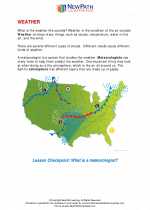 Weather
Weather  Worksheet/Answer key
Worksheet/Answer key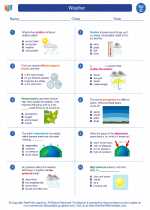 Weather
Weather  Worksheet/Answer key
Worksheet/Answer key Weather
Weather  Worksheet/Answer key
Worksheet/Answer key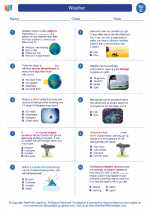 Weather
Weather  Vocabulary/Answer key
Vocabulary/Answer key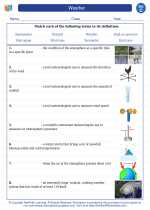 Weather
Weather  Vocabulary/Answer key
Vocabulary/Answer key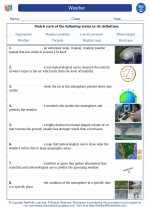 Weather
Weather 

 Worksheet/Answer key
Worksheet/Answer key
 Worksheet/Answer key
Worksheet/Answer key
 Worksheet/Answer key
Worksheet/Answer key
 Vocabulary/Answer key
Vocabulary/Answer key
 Vocabulary/Answer key
Vocabulary/Answer key

The resources above cover the following skills:
EARTH AND SPACE SCIENCE (NGSS)
Earth’s Systems
Students who demonstrate understanding can:
Represent data in tables and graphical displays to describe typical weather conditions expected during a particular season.